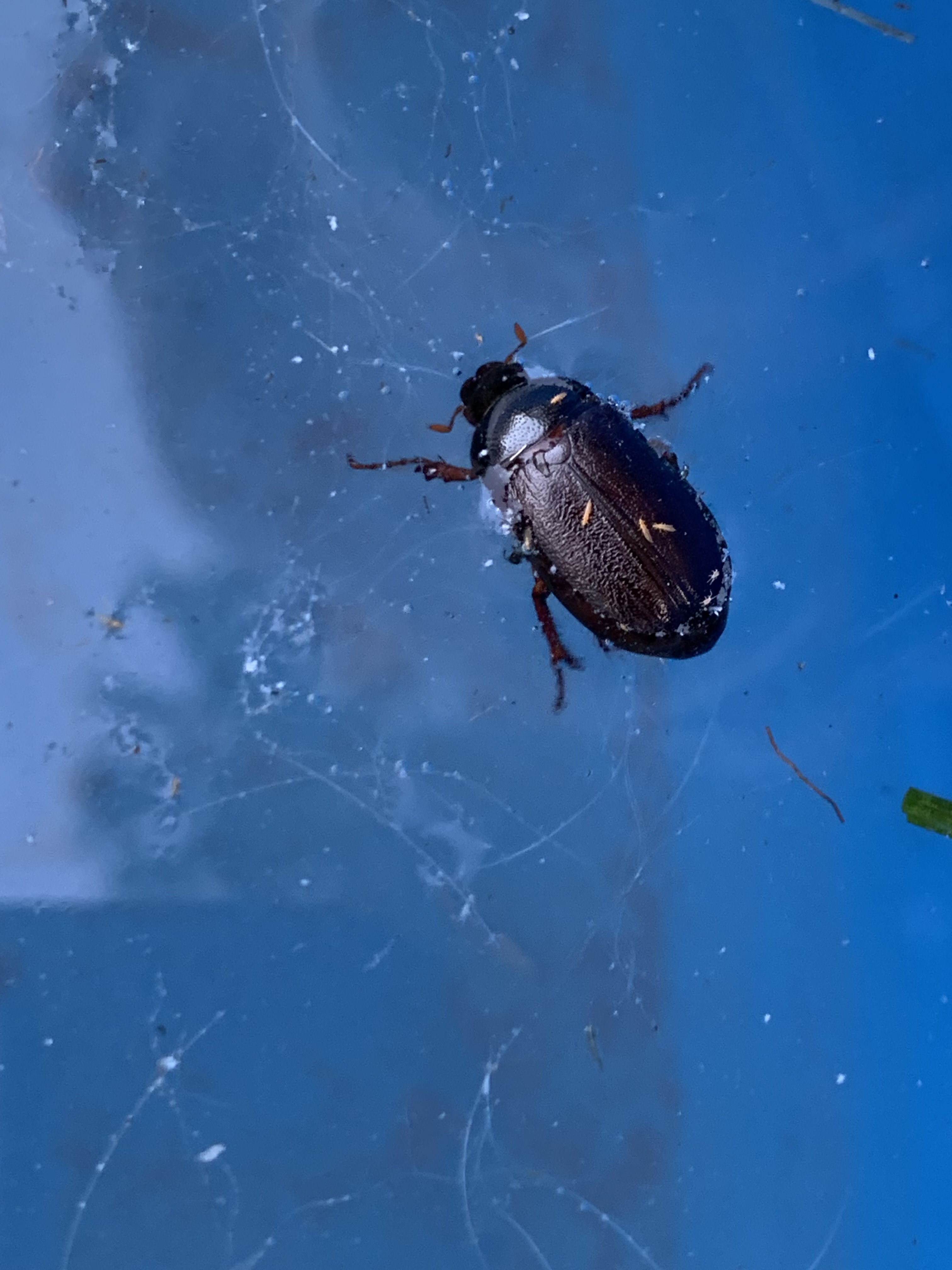Years ago I found myself at a gas station just over the Missouri line. It was around 2:00 in the morning, and we needed gas. The driveway of the gas station was literally covered with a writhing mass of June bugs. When we opened the car door, the bugs started coming in, and my dog started crunching them. It gives me the willies to think of it. I was reminded of it the other night when we were sitting on the screened-in deck with a late-night glass of wine. We had the lights on, and a few June bugs started crashing and buzzing against the screen. The lights attracted them apparently.
June bugs, also known as May beetles, get their name because they come out in May or June around here and make a lot of noise against the screens when the lights are on. Although we call them all June bugs, they aren’t bugs at all, and they’re not all the same species. They are members of the scarab beetle family, and more specifically of the genus Phyllophaga. (The name comes from Greek for leaf eater.) Over 200 species in this genus have been identified as native to North America. The adults of the species we’ve found on Owl Acres are black or very dark brown with no other markings. They’re stout and oval-shaped, and somewhat hairy on the underside. They have the shiny shell-like wing cases typical of beetles. They also have clubbed antennae with segments which can be spread out to capture information, or gathered into a ball.
June bugs mate in early summer. The female will lay 60 to 75 eggs just below the surface of the ground. The eggs hatch about three weeks later, sending forth little six-legged white larvae with black heads (AKA grubs) out to find food. They nosh on the roots of grass and other plants with their strong mouth parts, which does not endear them to gardeners and lawn perfectionists. The larval stage lasts through the summer, fall and winter, and, in most midwestern species, can take up to three years to complete. The larvae molt, growing larger and hungrier with each instar. In the spring of the second year in the case of Phyllophaga tristis and the third year of most other June bug species, the larvae pupate. Three weeks later, they emerge as adult June bug beetles. The adults are half to one and a half inches long. They’re annoying when they crash and buzz against the screens, but they are harmless to humans. They don’t bite. They do eat fruits, leaves and vegetables, but it’s the larvae that cause serious damage in a lawn or garden because they kill the plants by eating the roots. Because of their two or three-year cycle, a locale might have swarms of June bugs one year and few to none the next. Other places may have several populations in various stages, so it appears that June bugs come every year. We haven’t tracked them on Owl Acres so don’t know which case applies here.
Adult June bugs rest during the day and come out to play in the evening. They fly using their hind wings only, and are therefore clumsy and not very fast fliers. This is when lizards, birds, frogs, and rodents make crunchy snacks of them. A particular type of fly lays its eggs inside the adult’s wing case where the June bug/beetle can’t reach it. The eggs hatch and the fly larvae consume the adult June bug. Other parasites lay their eggs in the June bug larvae and the fly or wasp larvae eat the June bug larvae. It is not a live and let live world down there in the grass!
Photo by Author. Alt text: A hapless June bug swims in a blue wading pool, just before the dog eats it.

3 comments
I have heard them referred to as croutons of the sky!
I love it!